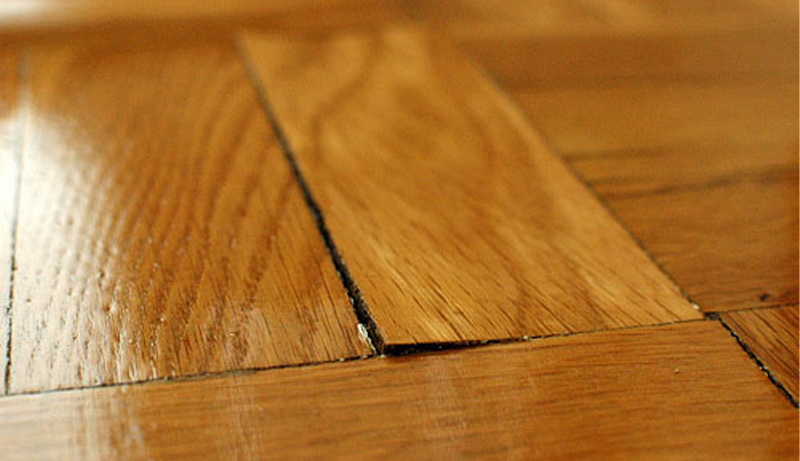Have you observed any buckling in your wood floor? Do you anticipate disaster? Read on before deciding to replace it entirely.
Defining Buckling
Buckling is the visible hump, wave, or convex shape that results from the wood flooring swelling and lifting up from the subfloor.This issue is typically brought on by too much moisture in the wood, which might result from flooding, spills, leaks from refrigerators, or humidity.
Too much moisture causes the wood to expand and push on nearby boards, lifting them up and causing them to buckle.
Buckling Wood Floor Indicators
- There are a few indicators that wood floors are collapsing. Some of the most typical ones to watch out for are listed below:
- Raised or humped areas: Your wood floors may have humps or waves, particularly in the center of the room or close to the walls.
- Gaps or separations: The boards may break or separate from the walls or from one another.
Cupped floor: The boards’ edges may curl up or down, giving the floor a cupped or crowned appearance. - When you walk on the boards, you could hear a squeaking or creaking sound as they rub against one another.
- Areas that seem soft or spongy: If the wood feels soft or spongy to the touch, it has likely absorbed too much moisture.
Recognizing Buckling as Distinct from other Flooring Problems
Even for the untrained eye, buckling is quite simple to spot.

The term “hardwood floor buckling” refers to any raised regions on your hardwood floor coming together, especially in the center of a room.
Additionally, you might see cracks in the wood or spaces between the boards.
Other typical problems with wood flooring
Although buckling is a typical problem with wood flooring, it’s not the only one. Here are some additional issues you might run into:
- When the boards’ edges begin to curl upward and concave, this is known as cupping. Usually, moisture damage from spills or leaks results in cupping.
- The reverse of cupping, in which the center of the boards begins to rise, is crowning. When the humidity in the room is too low, the boards can shrink and crowning can happen.
- When there are obvious gaps between the boards, this phenomenon takes place. Seasonal changes or poor installation may be to blame.
How can you tell buckling from these problems now that we’ve discussed some typical wood flooring difficulties? Here are a few advices:
- Find the problem’s location. While cupping and crowning typically affect the margins of the boards, buckling typically occurs in the center of a room.
- Look for symptoms of water damage, such as stains or mold, if you think moisture damage is the root of your hardwood flooring problem.
- Take into account the humidity level: If the problem with your hardwood flooring is caused by humidity, keep an eye on the humidity level in the space and adjust as necessary.
Summary of how to fix a buckled wood floor.

In conclusion, correcting a buckling floor frequently necessitates addressing the root causes, such improper subfloor construction, which may have exacerbated the situation.
It is crucial to find and fix any flaws in the flooring or foundation if you want to return the hardwood planks and boards to their original shape. This can entail leveling the foundation, enhancing moisture control and drainage, or changing out deteriorated materials.
For a stable, even, long-lasting flooring solution, proper attention should be given when replacing the hardwood planks and boards.
Homeowners can stop future buckling and take advantage of a secure, comfortable, and visually beautiful floor by taking care of the underlying issues and using the proper corrective procedures.



